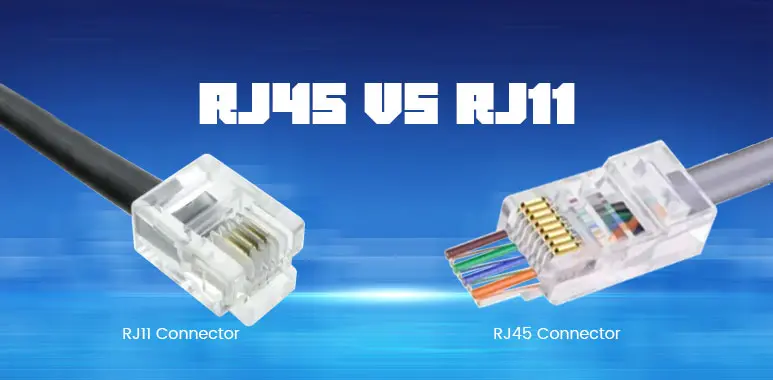Hello everyone, today I will introduce RJ45 and the difference between it and RJ11.
The RJ45 interface is usually used for data transmission, and the most common application is the network card interface.
RJ45 is a type of various connectors; RJ45 headers have two different methods according to the order of the wires, one is orange-white, orange, green-white, blue, blue-white, green, brown-white, brown; the other It is green-white, green, orange-white, blue, blue-white, orange, brown-white, and brown; therefore, there are two types of lines using RJ45 connectors: straight-through lines and cross-over lines.
If you want to buy a switch with RJ45 interface, we also have models for your reference, please check: 5950-28TD-LC/5950-36TM-H.
RJ45 type network card interface
10 100base tx RJ45 interface is a commonly used Ethernet interface, which supports 10M and 100M adaptive network connection speed. There are two types of common RJ45 interfaces: DTE type for Ethernet network card, router Ethernet interface, etc. DCE type for switches, etc. DTE can be called “data terminal equipment”, and DCE can be called “data communication equipment”. In a sense, DTE equipment is called “active communication equipment”, and DCE equipment is called “passive communication equipment”. When two devices of the same type use the RJ45 interface to connect for communication, a crossover cable must be used.
RJ45 type network cable plug
RJ45 type network cable plug, also known as crystal head, is made of eight cores and is widely used in the connection of network cables (called five types of cables or twisted pairs) between network devices of LAN and ADSL broadband Internet users.
Difference between RJ45 and RJ11
Different standards, different sizes. Due to the different sizes of the two (RJ11 is 4 or 6 pin, RJ45 is 8 pin connection device), obviously RJ45 plugs cannot be inserted into RJ11 jacks. The reverse is physically possible (RJ11 plugs are smaller than RJ45 jacks), giving the illusion that the two should or can work together. Actually not so. It is strongly recommended not to use RJ11 plugs for RJ45 jacks.
Because RJ11 is not standardized internationally, its size, insertion force, insertion angle, etc. are not unified in accordance with the design requirements of international standard connectors, so interoperability cannot be guaranteed. They even cause the destruction of both. Since the RJ11 plug is smaller than the RJ45 jack, the plastic parts on either side of the plug will damage the metal pins of the jack that is inserted.
| RJ11 | RJ45 | |
| Configuration | 6P4C (6 positions, 4 connectors) | 8P8C (8 positions, 8 connectors) |
| Usage | Phones, ADSL lines, modem cables. RJ11 is mostly used for voice applications. | Computer networking. RJ45 is used in Ethernets or connecting cable modems with Wi-Fi routers. |
| Bandwidth | RJ11 connectors can support about 24Mbps | RJ45 connectors can support 10Gbps over Ethernet, provided the other equipment like network cables also support that speed. |
| Shape and size | Compact, square-shaped | Longer, more rectangular |
I hope today’s sharing will be helpful to you, please contact us if you have any ideas.


Leave a comment